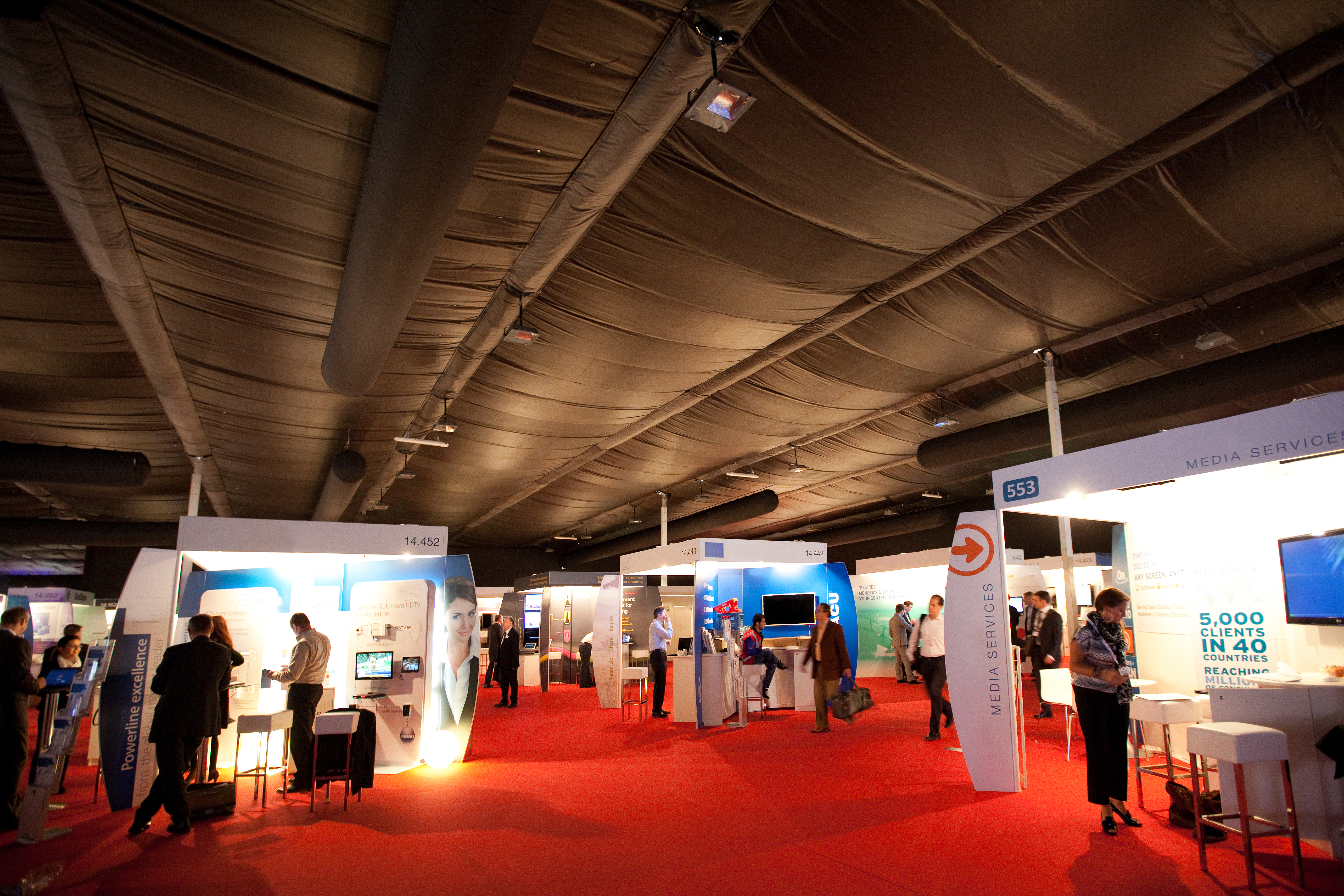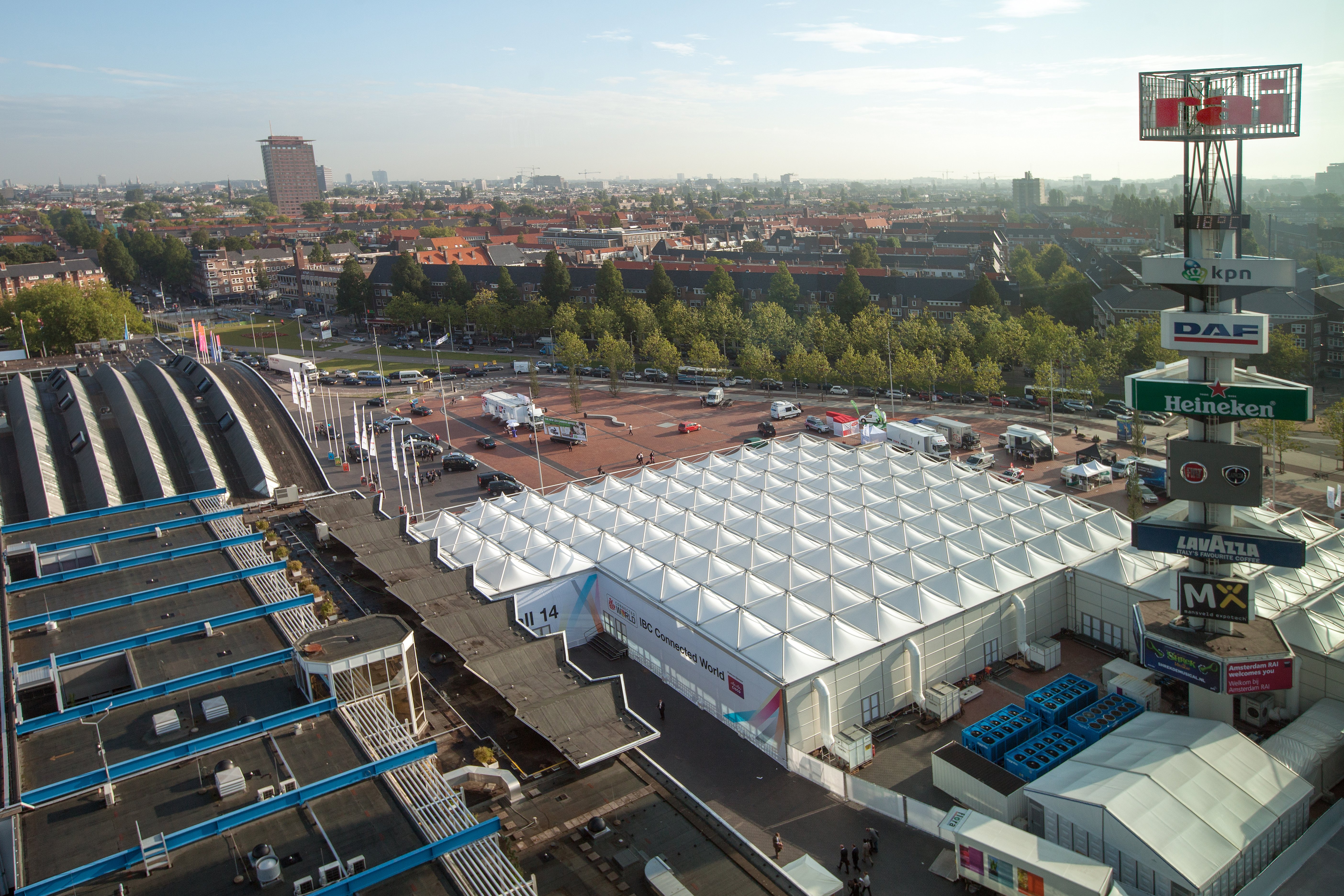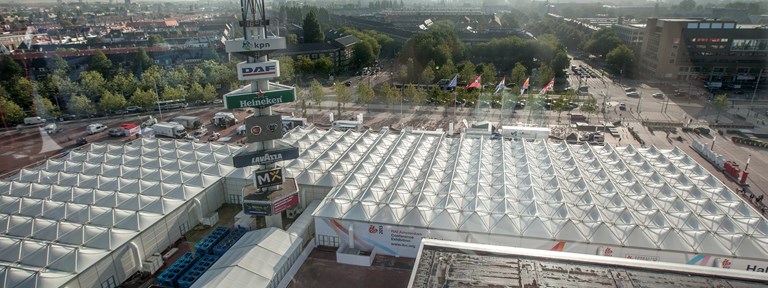‘Our clients rely on us for their planning’
The challenge: to temporarily expand the Amsterdam RAI with a substantial amount of premium exhibition space, on a busy public square, within two weeks.
The IBC, or International Broadcasting Convention, is one of the largest trade fairs in the world. After several years of substantial growth, the required floor area even exceeded the maximum capacity of the RAI, the largest exhibition and convention center in the Netherlands. Our client engaged us to help them retain the IBC for the RAI by providing sufficient high-end exhibition space.
We ultimately delivered 10,000 m2 of extra exhibition space, which was fully integrated with the existing buildings and offered exhibitors the same level of comfort and quality.
We look back on this special assignment with project leader Eva Berkhout.
Loads of custom work and additional calculations
"This project offered us several major challenges," says Berkhout. "The first was to answer the question of how we could connect the new exhibition area seamlessly to the existing buildings. When we mean seamlessly, we mean that visitors will not be able to tell the difference between the existing hall and our temporary one. We could not achieve this by simply building as close to the RAI as possible. In the end, we decided to build over the RAI, almost like as if we were covering it, which is certainly not standard. We had to develop a new segment of tent structure for this, which we could connect to the canopy, so that our exhibition space could really be 100% integrated within the RAI. It was very important for the client that visitors would not get the feeling they were entering a temporary space and that exhibitors could be offered exactly the same level of quality."
Various components had to be customized to connect the existing and new halls. In addition, the presence of an underground car park proved to be another complicating factor. "The load bearing capacity had to be crystal clear, so we had to make a lot of additional calculations. The crane plan had to be adjusted, because we couldn't use heavy cranes above the car park. It’s moments like these that I’m extra glad that we have a lot of specialist knowledge available inhouse.”

Building on a busy square
The location itself also presented the Losberger De Boer team with some practical challenges. After all, the RAI is located on a public square in a busy part of Amsterdam, which meant that the building team's room to move was minimal. "The presence of so many people means that you have to take a lot of extra precautions. You have to come up with a special safety plan and take into account things like fencing, signposting and crowd control. But the biggest challenge lies in the fact that materials need to be delivered in carefully structured phases. You cannot have all your materials delivered at once on a site like this. As a result, we also had to build in phases.”
Ultimately, a job like this can only be done with an experienced team and a very tight schedule, says Eva Berkhout. "There are a lot of variables. When a batch of materials is delivered, we have to resume building immediately. The delivery must be exactly right, both in terms of timing as well as contents, otherwise the whole process will be delayed. Running late is really not an option. Suppliers play an important role in this as well; they also have to deliver the right things at exactly the right time. That is why we always offer to use suppliers from our network for things like sanitary and upholstery, because we know that we can trust them to do their job. Ultimately, it is a challenge to manage a large number of suppliers during a project like this, but we do it to make sure that things work out, but also to unburden our customer. A project of this size and complexity is like a train. When it starts moving, everything has to be on schedule. You can't just add a stop along the way without causing a delay. And delays are not an option, because our project planning is interwoven with the organization's planning. They rely on us for their planning as well, so ours has to be excellent and we have to meet it, otherwise the customer will be in trouble. I dare say that you can't do a job like this without a very experienced team."
Immediate response to emergencies
As project manager, Eva is always on site during construction. No matter how tight the planning and how good the preparation, unforeseen things can always happen. "I have to be able to jump in immediately. Something can always go wrong. A traffic accident can disrupt transport, and the weather can always throw a spanner in the works." During a crucial phase of this project, namely when the team had to hoist the roof onto the structure, it started snowing heavily. "We couldn't crane because of the snow, but we had to get the roof on the structure. We gathered a large team, waited for the right moment and then quickly cleared the roof with brooms, so that we could still crane the 100-metre-long roof onto the building that very day. Our people worked a lot of hours that day, but if the planning leaves no room for flexibility, you have to be flexible yourself. At times like these, you are fortunate to be able to work with a highly motivated team that is truly committed to a good end result."

